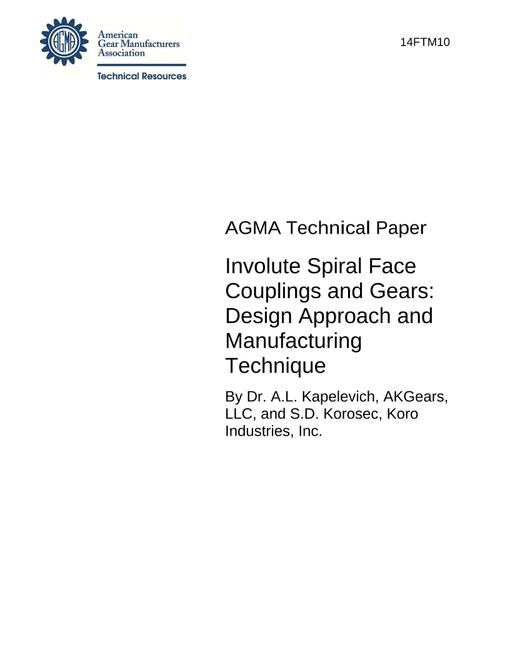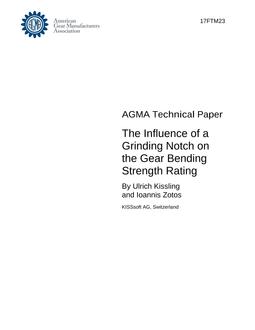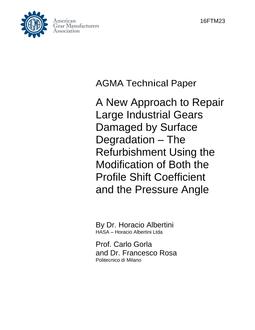-
-
Available Formats
- Availability
- Priced From ( in USD )
-
Available Formats
-
- Immediate download
- $85.00
- Add to Cart
-
- Printed Edition
- Ships in 1-2 business days
- $85.00
- Add to Cart
Customers Who Bought This Also Bought
-

AGMA 17FTM14
Priced From $85.00 -

AGMA 14FTM10
Priced From $47.00 -

AGMA 14FTM03
Priced From $47.00 -

AGMA 17FTM23
Priced From $85.00
About This Item
Full Description
Industrial gears are often very expensive; they are large and manufactured in batches of small quantities, or even individually. Nevertheless, several industrial gears are prematurely discarded because of superficial damages, even if modern technologies and machine tools can completely repair these kinds of failures. For a long time, in fact, the repair of a gear was limited to the modification of the addendum modification coefficient (a.k.a. profile shift coefficient), while the modification of the pressure angle was usually impracticable, due to the axis limitations of the conventional gear machinery, where the pressure angle and the normal module are set by the tooling. Thus for each repair requiring that pressure angle variation, a gear tooling with the modified pressure angle should be used.
In the past decade, the scenario has changed, thanks to the introduction of the
– multi-axis CNC Machine Centers,
– gear modules for CAD/CAM software,
– evolution of CNC Gear Grinding machines,
– development of new cutting tools able to machine parts with surface hardness higher than 60 HRC.
The above has enabled the application of new types of modification for the refurbishment of superficially damaged gears.
This paper presents a new approach to repair industrial gears by showing a case study where pressure angle modification is also considered, differently from the past repairing procedures that dealt only with the modification of the profile shift coefficient.
A computer program has been developed to automatically determine the repair alternatives under two goals: minimize the stock removal or maximize gear tooth strength.
It will also be shown that the refurbishment of industrial gears using these approaches can result in a 30–40% savings, compared to the cost of a new part, without reducing gear strength. This paper will also show that the whole repair procedure can be carried out in no more than two weeks, depending on the gear size.





